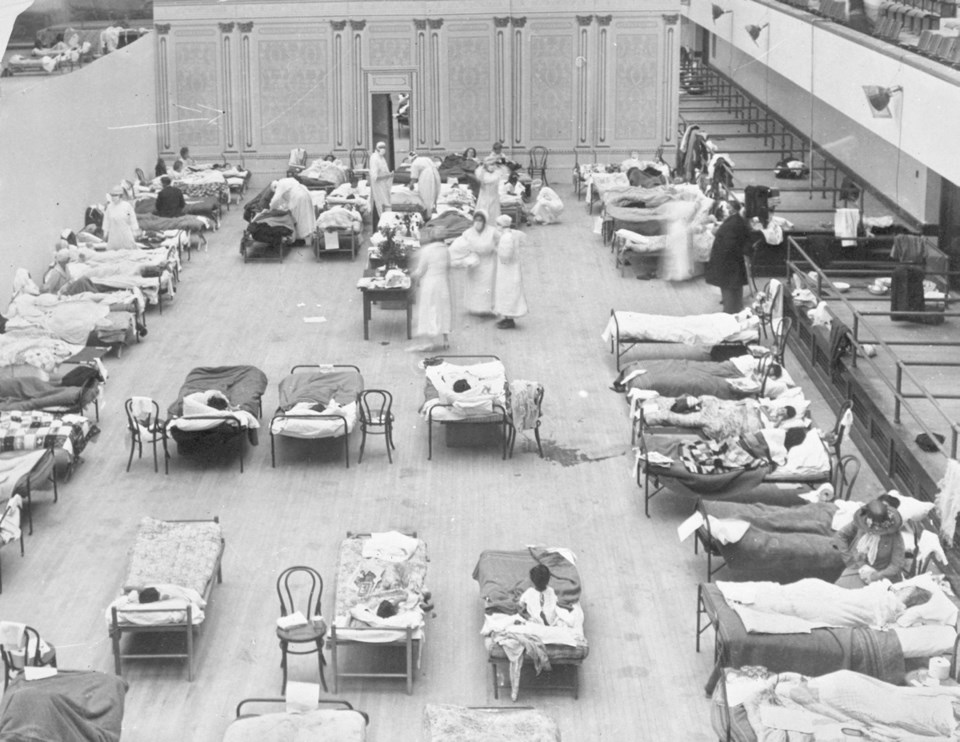As we contemplate our battle with the coronavirus, it is interesting to look back at the last time Victoria faced such a threat, more than a century ago.
The 1918 influenza pandemic reached the shores of Vancouver Island at the end of the First World War. In many respects, Victoria would emerge as one of the most successful communities in the battle with that disease.
In part, of course, this is due to the position of Victoria, both on an island, and very remote from the initial point of entry in eastern North America.
Local health officials, led by public health officer Dr. Arthur G. Price, had ample opportunity to learn from the experience of others.
By most accounts, the earliest outbreaks in Canada were in Quebec in early September 1918. By Sept. 26, Price was advising Victorians of the appropriate precautions, citing guidance from the Surgeon General of the United States. The newspaper article added some dramatic flair by suggesting that the epidemic might have been deliberately started by men landed from a German submarine.
By early October that guidance had been transformed by an order-in-council mandating severe restrictions on public gatherings that would remain in place until Nov. 20. It is no surprise that the earliest major outbreaks took place among troops gathering for the Siberian force at Willows Camp in the centre of Oak Bay.
Fortuitously, the success of the military in dealing with this major outbreak gave Price and local medical facilities a good idea of how to handle the more widespread outbreak that was to follow. The Oct. 10 edition of the Daily Colonist, which had a story headlined “Victorious Allies Advancing,” also reported that the people of Victoria were complying with the order against public gatherings without grumbling.
That grudging acceptance led to the closure of all public meeting places including churches, schools, theatres and arenas. Price was ever vigilant, chastising a local fundraising event featuring “the human fly” for gathering a crowd even out-of-doors. He suggested that those in attendance were even more foolhardy than the performer for putting their lives at risk and encouraged stricter compliance with these stirring words:
“Wake up! Realize that there is a war on, a war in our very midst, an epidemic of influenza. Do not sneer at the enemy. Do not belittle it by calling ‘Flu’. Give it its full name, be serious and realize that the undertakers are busy.”
Sporting events and even public funerals were banned. Casualty figures and stories of those who had fallen in that war became a regular feature in the newspaper.
Despite those dire warnings not all were supportive.
With the approaching armistice, local churches began to protest the ban on religious services. Led by Anglican Bishop Charles Schofield, a coalition of Victoria clergy formally protested the ban stating: “I believe that the inherent right within the British Empire to worship Almighty God corporately to be one which no legislature can take away wholly even for a time.”
The bishop then proceeded to organize an outdoor inter-denomination Thanksgiving service on Cathedral Hill to mark the Armistice.
He was joined by the Rev. Dr. W. Leslie Clay of St Andrew’s Presbyterian Church at that event.
Religious folk were not the only ones who ignored that ban. Even the rumour of Armistice on Nov. 7 brought crowds into the streets and Nov. 11 saw a full parade.
Nevertheless, by this time most were cautious. Those who showed signs of illness kept to their beds, most avoided any indoor meetings.
Signs were often posted on doors of homes of the sick. Posters in Chinese were distributed in Victoria’s Chinatown.
By Nov. 20, the worst was over. Price lifted the ban on public meetings while encouraging people to remain vigilant, noting the he would not hesitate to reimpose restrictions should the disease reappear.
His note of caution was well taken. It would be New Year’s Eve before packed public gatherings once again became common.
Perhaps it was that intimacy that led to a second outbreak. Restrictions were reapplied in January 1919, and again when a third wave of the disease struck in February 1920.
Despite all this, Victoria, with a death rate of about 2.3 per thousand, weathered the storm remarkably well compared to other cities in North America. Dr. Arthur Price is one of Victoria’s greatest unsung heroes of the period of the Great War.
Jim Kempling received his PhD in history from UVic in 2019. His area of interest is Victoria during the Great War.



